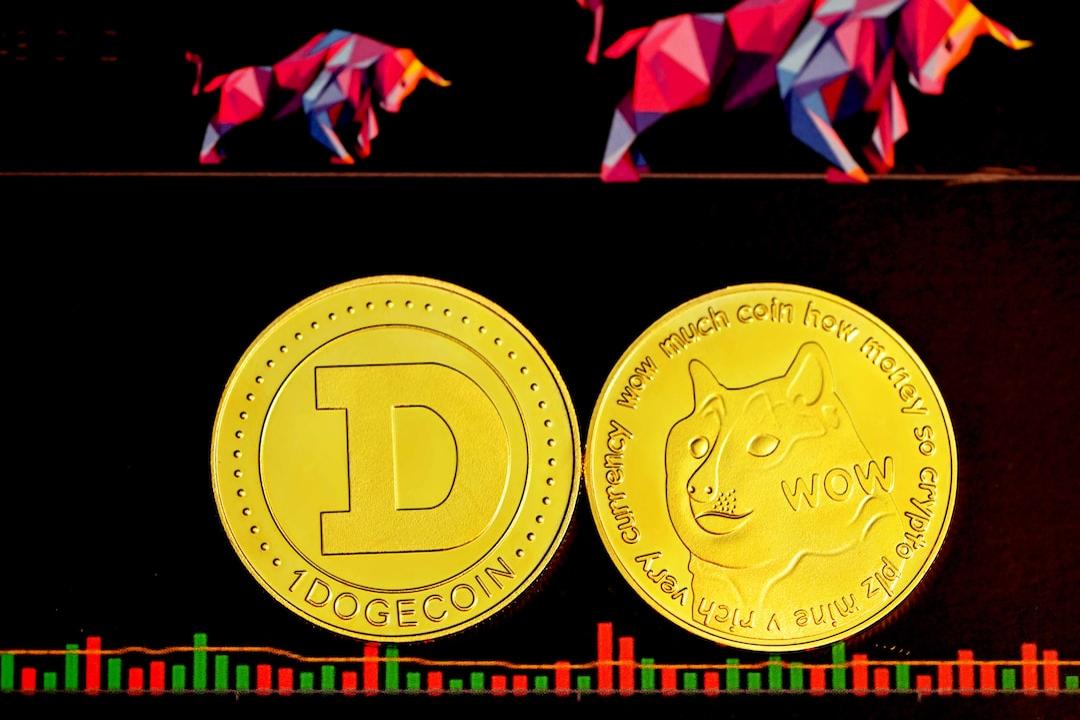Just like the Internet of Everything, its true potential lies in the post-blockchain era, reconstructing usage paths, lowering collaboration thresholds, and giving rise to a batch of truly functional products and systems.
(Background: Hong Kong’s Web3 development milestone “Stablecoin Bill” passed its third reading: regulating offshore issuers)
(Context: Bybit becomes the first centralized exchange to launch Tokyo Games Token ($TGT), aiding AAA-level Web3 games take off)
To those feeling lost during the blockchain transformation
Some say crypto is a Ponzi scheme, a bubble, a speculative game destined to crash to zero. Others say Web3 is a revolution, a leap toward normalization, a new phase of civilization built on technological continuity. These two voices create a torn narrative scene. Let’s not rush to take sides; first, let’s present a more straightforward conclusion:
The underlying logic of business has not changed. Whether from the portal to App in Web2, or from issuing coins to building infrastructure in Web3, behind the prosperity lies the same old path—this time, narratives are wrapped in protocols, and capital is hidden in the code.
Looking back over the past decade, the trajectory of China’s internet is clear: concept-driven, financing outpacing user growth; subsidies driving traffic, capital-driven growth; then layoffs, efficiency improvements, and profit-making; followed by platform transformation and technological restructuring. Today’s Web3 is also following a similar development rhythm.
In the past year, competition among projects evolved into a contest using TGE and Airdrop as platforms to acquire users. No one wants to fall behind, yet no one knows how long this “user swapping” competition will last.
Therefore, I wrote this article attempting to break down the seemingly chaotic narratives into several more traceable stages. Let’s follow the footprints of history to see how Web3 arrived at today and where it might head next.

1. Review of the Development Stages of the Internet Industry: From Token Distribution Expansion to Industry Collaboration
Most people are likely familiar with this history: the Internet used to be a carnival for everyone, with dozens of apps clamoring for you to “enjoy for free” every day. A single phone number could get you food, rides, haircuts, and massages, like celebrating the New Year.
Today’s Internet is a system engineering project that has completed more than half of its journey: you know which platform offers the cheapest products, which app works most efficiently in a given scenario, and the ecological landscape has long been established, with innovation hidden in efficiency.
So I’ll just break down four stages simply—reviewing these logics may help better understand the path that Web3 is currently replicating.

1. Narrative-Driven, Mass Innovation Stage (Before 2010)
This was an era defined by “terms.” “Internet +” became the universal key; whether in healthcare, education, transportation, or local living, as long as you attached these four words, you could leverage hot money and attention. Entrepreneurs at that time weren’t rushing to build products; they first sought the right track, created concepts, and wrote business plans. Investors weren’t chasing revenue curves but rather whether a “sufficiently new, large, and easily imaginable” story could be told.
O2O, social e-commerce, and the sharing economy saw project valuations soar as terms cycled; financing rhythms were dominated by narrative rhythms. Core assets were not users, products, or data, but a financing PPT that matched the trend.
This was also an era where “whoever first positions themselves has the opportunity.” Validating products and running models were the second step; first, you had to tell a story on the wind, to qualify for the competition.

2. Burn Rate Expansion, Traffic Competition Stage (2010–2018)
If the previous stage relied on stories to gain attention, this stage relied on subsidies to forcibly seize the market. From Didi and Kuaidi’s taxi wars to the bike-sharing battles between Mobike and Ofo, the entire industry fell into a highly consistent approach: using capital to exchange for scale, using price to change habits, and using losses to gain entry. Whoever could burn through a round of financing could continue expanding; whoever secured the next round of investment could maintain their position on the battlefield.
This was a period where “seizing users” was paramount. Experience, efficiency, and product barriers took a back seat; the key was—who could first become the default choice for users.
Thus, the subsidy war escalated, and low prices became standard: taxis for less than 5 yuan, bike rides for a penny, offline stores displaying app QR codes, waiting for you to enjoy free meals, haircuts, and massages. It seemed like service was being democratized, but in reality, it was a capital-controlled battle for traffic.
This wasn’t about whose product was better, but rather who could burn money more effectively; it wasn’t about who could solve problems, but who could “enclose land” faster. Long-term, this laid the groundwork for subsequent refined transformations—when users were bought, more effort had to be expended to retain them; when growth relied on external forces, self-closure became challenging.

3. Grounding, Fine-Tuning Operation Stage (2018–2022)
When stories are told for too long, the industry eventually returns to a real problem: “How to land after growth?” From 2018 onwards, as the growth rate of mobile Internet users slowed and traffic dividends gradually faded, customer acquisition costs continued to rise. According to QuestMobile data, as of the end of September 2022, the number of monthly active users of China’s mobile internet approached 1.2 billion, an increase of only about 100 million from 2018, taking nearly four and a half years, with growth significantly slowing. Meanwhile, the number of online shopping users reached 850 million in 2022, accounting for nearly 80% of all internet users, indicating a saturated growth space.
At the same time, numerous “story-based” projects driven by financing gradually exited the stage. O2O and the sharing economy were the areas most concentrated in this stage’s reckoning: projects like Street Electric, Bluegogo, and Wukong Travel collapsed one after another, revealing a set of growth models lacking coherence and user loyalty that were eliminated by the market.
However, amidst this tide, a batch of projects that truly made it emerged. They shared a common trait: they weren’t driven by subsidies to create short-term heat, but rather built a closed-loop business model through real demand scenarios and system capabilities. For example, Meituan gradually constructed a complete service chain from ordering to fulfillment, from traffic to supply in the local living track, becoming a platform-type infrastructure; Pinduoduo rapidly penetrated user minds in the lower-tier e-commerce market through extreme supply chain integration and operational efficiency; Tencent firmly held social connections, while Alibaba dominated e-commerce, and gaming concentrated in Tencent and NetEase’s hands.
Their commonality was not that they “thought further,” but rather ran more steadily and calculated more clearly—structurally completing the closed-loop from traffic to value, truly living as a sustainable product system. In this stage, growth was no longer the only goal; whether it could convert growth into structural retention and value sedimentation became the true watershed determining the fate of projects. Extensive expansion was eliminated in this stage; what remained were those systemic projects capable of building positive feedback mechanisms between efficiency, products, and operations.
This also means that the era of narrative-driven business is over; commercial logic must possess the capability of “self-closure”: retaining users, sustaining models, and operating through structures.

4. Ecosystem Basic Form Established, Technological Transformation Seeking Opportunities Stage (2023 to present)
After leading projects emerged, the survival problems of most projects have been resolved, yet the true differentiation has just begun. Competition between platforms is no longer a battle for users but a competition of ecological capabilities. As top platforms gradually close off growth pathways, the industry enters a cycle characterized by structural stabilization, resource concentration, and collaborative capabilities. The real moat may not be a leading function but whether the internal cycles of the system are efficient, stable, and coherent.
This is a stage belonging to systemic players. The landscape is basically set; if new variables want to break through, they can only find gaps at the structural edges and technical breakpoints.
In this stage, almost all high-frequency essential tracks have been delineated by giants. In the past, one could secure a position by “launching early and burning money quickly,” but now, growth must be embedded within systemic capabilities. The platform logic has also upgraded: from stacking multiple products to an ecological flywheel, from expanding single-point users to organizational-level collaboration.
Tencent integrates WeChat, mini-programs, and advertising systems to construct an internal circulatory closure; Alibaba reorganizes Taotian, Cainiao, and DingTalk to horizontally connect commercial links, attempting to regain efficiency leverage. Growth no longer relies on acquiring new users but on structural compounding generated by systemic self-operation.
As user paths, traffic entrances, and supply chain nodes gradually fall under the control of a few top platforms, the industry structure begins to close, leaving increasingly limited space for newcomers. Yet, it is precisely in this structurally consolidating environment that ByteDance emerges as an outlier.
It did not attempt to seize resource positions within the existing ecology but rather overtook from the bend, reconstructing content distribution logic from the bottom-up with recommendation algorithms. While mainstream platforms still rely on social relationship chains for traffic scheduling, ByteDance has built a distribution system based on user behavior, establishing its own user base and commercial closed loop.
This is not an improvement on the existing landscape but a technological breakthrough that bypasses existing paths and reconstructs growth structures.
The emergence of ByteDance reminds us: even if the industrial landscape tends to solidify, as long as there are structural fractures or technical voids, new players may still emerge. However, this time, the path is narrower, the rhythm faster, and the requirements higher.
Today’s Web3 finds itself in a similar critical interval.

2. Current Stage of Web3: “Parallel Reflection” of Internet Evolution Logic
If the rise of Web2 was an industrial reorganization driven by mobile internet and platform models, then the starting point of Web3 is a systematic reconstruction based on decentralized finance, smart contracts, and on-chain infrastructure. The difference is that Web2 constructed strong connections between platforms and users; whereas Web3 attempts to shatter and distribute “ownership,” reconstructing new organizational structures and incentive mechanisms on-chain.
Underlying Dynamics Remain Unchanged: From Story-Driven to Capital-Driven; From User Competition to Ecological Flywheels
The path that Web3 has experienced is almost identical to that of Web2. This is not a simple comparison, but a parallel reproduction of a structural pathway. This time, however, the focus is on token incentives; it relies on modular protocols; it revolves around TVL, active addresses, and airdrop scoreboards. We can roughly divide the development of Web3 to date into four stages:

1. Concept-Driven Stage — Token Issuance Drives: Stories Lead, Capital Follows
If the early days of Web2 relied on the “Internet +” story template, then the prologue of Web3 is inscribed in the smart contracts of Ethereum. In 2015, Ethereum went live, and the ERC-20 standard provided a unified interface for asset issuance, making “token issuance” a fundamental capability accessible to all developers. It did not change the essential logic of financing, but it significantly lowered the technical threshold for issuance, circulation, and incentives, thereby making “technical narrative + contract deployment + token incentives” the standard template for early Web3 entrepreneurship.
The explosion of this stage came more from technological drivers — blockchain empowered entrepreneurs for the first time in a standardized form, shifting asset issuance from a permissioned model to an open-source one. No complete product was needed, no mature users required; as long as there was a white paper that could clearly articulate the logic of the blockchain-driven Blockchain 1.0 era, an enticing token model, and an executable smart contract, projects could quickly complete the closed loop from “idea” to “financing.” The early innovations of Web3 were not because the projects were particularly clever, but because the proliferation of blockchain technology brought forth the imagination of the Blockchain 1.0 era.
Capital quickly formed a “betting mechanism”: whoever positioned themselves in the new track first, launched first, and articulated the narrative first could potentially gain exponential returns. This gave rise to an “unprecedented capital efficiency”: from 2017 to 2018, the ICO market experienced an explosive growth unprecedented in history, becoming one of the most controversial and iconic financing phases in blockchain history. According to CoinDesk, in the first quarter of 2018, the total amount raised by ICOs reached $6.3 billion, exceeding 118% of the total amount raised in 2017. Among them, Telegram’s ICO raised $1.7 billion, while EOS raised $4.1 billion within a year, setting a historical record.
During the window period of “everything can be blockchain” — as long as one could label it and construct a narrative, even if the landing path was not yet clear, they could pre-emptively claim future valuation imaginations. DeFi, NFT, Layer 1, GameFi… each hot term was a “window.” Project valuations soared to hundreds of millions or even billions before tokens circulated. This was an opportunity to enter the capital market with low barriers, gradually forming a relatively clear exit path: positioning in the primary market, triggering sentiment through narratives and liquidity in the secondary market, and then exiting during the window period.
In this mechanism, the core of pricing is not how much the project has done, but who positioned themselves earlier, who was better at creating sentiment, and who mastered the windows for releasing liquidity. Essentially, this is a typical characteristic of the early normalization of blockchain — infrastructure just landed, cognitive space not yet filled, and prices often formed before the product itself.
Thus came the “concept dividend period” of Web3: value is defined by narrative, and exit is driven by emotion. Projects and capital seek certainty within a liquidity-driven structure.

2. Cash-Burning Expansion Stage — Project Clusters and Full-Blown User Competition
Everything changed with the “most expensive thank-you letter in history.” In 2020, Uniswap airdropped 400 UNI tokens to early users, with each airdrop valued at about $1,200 at the time. The project team called it “giving back,” but the industry understood it as the optimal solution for cold starts. Initially just a gesture of “giving back to the community,” it inadvertently opened Pandora’s box for the industry: project teams realized that issuing tokens could exchange for loyalty, traffic, and even create a community illusion.
Airdrops transformed from an option to a standard configuration. Since then, project teams have had a revelation; almost all new projects set “airdrop expectations” as the default module for cold starts, using tokens to purchase user behavior to showcase their thriving ecosystems, with point systems, interactive tasks, and snapshots becoming essential. Many projects fell into a “growth driven by incentives rather than value” illusion.
On-chain data skyrocketed, and founders immersed themselves in the illusion of “success”: before TGE, there were casually millions of users and hundreds of thousands of daily active users; once TGE occurred, the scene instantly cooled down. I still remember in 2024, Fusionist’s on-chain DAU once exceeded 40,000, but after the listing announcement on Binance, on-chain activity almost dropped straight to zero.

I am not denying the significance of airdrops. The essence of airdrops is to purchase user behavior, an effective method for cold starts without consuming financing. However, their marginal effects are rapidly diminishing. Many projects have fallen into a formulaic loop of airdrop-driven user acquisition, and after acquisition, whether your business scenarios and product capabilities can retain users is the true value return and the only correct answer for project survival. (Note: Projects that survive through manipulating the secondary market with funds are not within the scope of this discussion.)
Ultimately, bribing users to purchase behavior is not the core of growth; without establishing a commercial foundation even in scenarios, airdrops ultimately consume the interests of either the project team or the users. When the business model lacks a closed loop, tokens become the only reason for user actions. Once TGE is completed and rewards cease, users will naturally turn away.
3. Business Validation Stage — Real Scenarios, Narrative Validation
I often advise project teams to think carefully about one thing before issuing tokens: what scene are you solving which problem for? Who are the key contributors? After TGE, does this scene still hold, and will there still be people who genuinely stay and use it? Many project teams respond that they can achieve rapid user growth through token incentives. I always ask a follow-up: “And then?”
Usually, at this point, the project team falls silent for a moment, chuckles, and says: “Well…” And then, there’s nothing more. If you merely wish to rely on “issuing incentives” for a wave of interaction, you might as well just issue a meme. At least everyone knows this is a game of emotions, with no expectations for retention.
Finally, everyone begins to look back: what structures do these flows, interactions, and issued tokens actually lead to? After throwing tokens, I realize I am the clown . Therefore, the keywords for this stage become: usage scenarios, user needs, product structure. Only by relying on real scenarios and clear structures can one carve out a growth path of their own. To be honest, I personally do not favor Kaito’s business logic — it resembles an extreme form of “bribery culture,” implying a high utilization of incentive mechanisms, and can even be seen as a repackaging of the relationship between platforms and content.
However, it cannot be denied that Kaito succeeded. It represents a real business scenario; the pre-TGE expectations became an accelerator for the project to occupy the market, and the post-TGE celebration continues. Because Kaito provides a way for KOLs to expose the project, with the benefits coming from the project itself while key figures remain on the Kaito platform’s commercial logic.

At the same time, I am gratified to see that more and more projects are starting to build around real scenarios, whether it’s trading, DeFi, or foundational capabilities like identity systems. Those teams that choose the right direction at the right time and refine real products are gradually taking root and sprouting through the positive loop of vertical scenarios — from use to retention, from retention to monetization — constructing their own industrial paths.
The most typical example is exchange products: they convert high-frequency demand into structural traffic, then complete the closed loop through assets, wallets, ecological interactions, and have walked out the “structural evolution line” in Web3 projects.
4. Structural Sedimentation Period — Platform Stabilization, Variables Contracting
Truly positively cycling business scenarios are the tickets for projects to gain industry voice. For example, Binance started with trading and gradually connected liquidity, asset issuance, on-chain expansion suites, and traffic entry, forming a full-process scheduling system from off-chain to on-chain; Solana, through light assets igniting and underlying performance support, sedimented a feedback structure of community, developers, and tool systems.
This is a period for the industry to transition from project experimentation to structural sedimentation — no longer racing for speed, but beginning to compete for the completeness of the system.
However, this does not mean that new projects lose their chances to break through. The projects that can truly emerge are not those with the loudest voices or the most widespread narratives, but those that can “fill positions” in structure or “restructure” in models. Do you remember the byte-hopping during the mobile internet era? I believe that in the post-blockchain era, a new cycle driven by AI is on the horizon. There will certainly be projects like ByteDance that, leveraging AI, rapidly navigate through structures to achieve breakthroughs and self-closure in the industry.
The platformization stage of Web2 left behind giants and flywheels, as well as gap-breakers like ByteDance; the structural phase of Web3 may similarly nurture the next variable project that “kills out from the margins” with the correct structure. To envision slightly, if it’s infrastructure, it should be built for the native AI era, promoting the development of technological products for this era, just like the mission of Ethereum in the Blockchain 1.0 era mentioned above; if it’s a DAPP, it must use AI to break the original user barriers (the user threshold for web3 is too high) and disrupt existing commercial orders.
If someone asks me how the future of web3 will develop, I would say: “Just like everything can be added to the Internet, its true potential lies in the post-blockchain era, reconstructing usage paths, lowering collaboration thresholds, and giving rise to a batch of truly operational products and systems.


